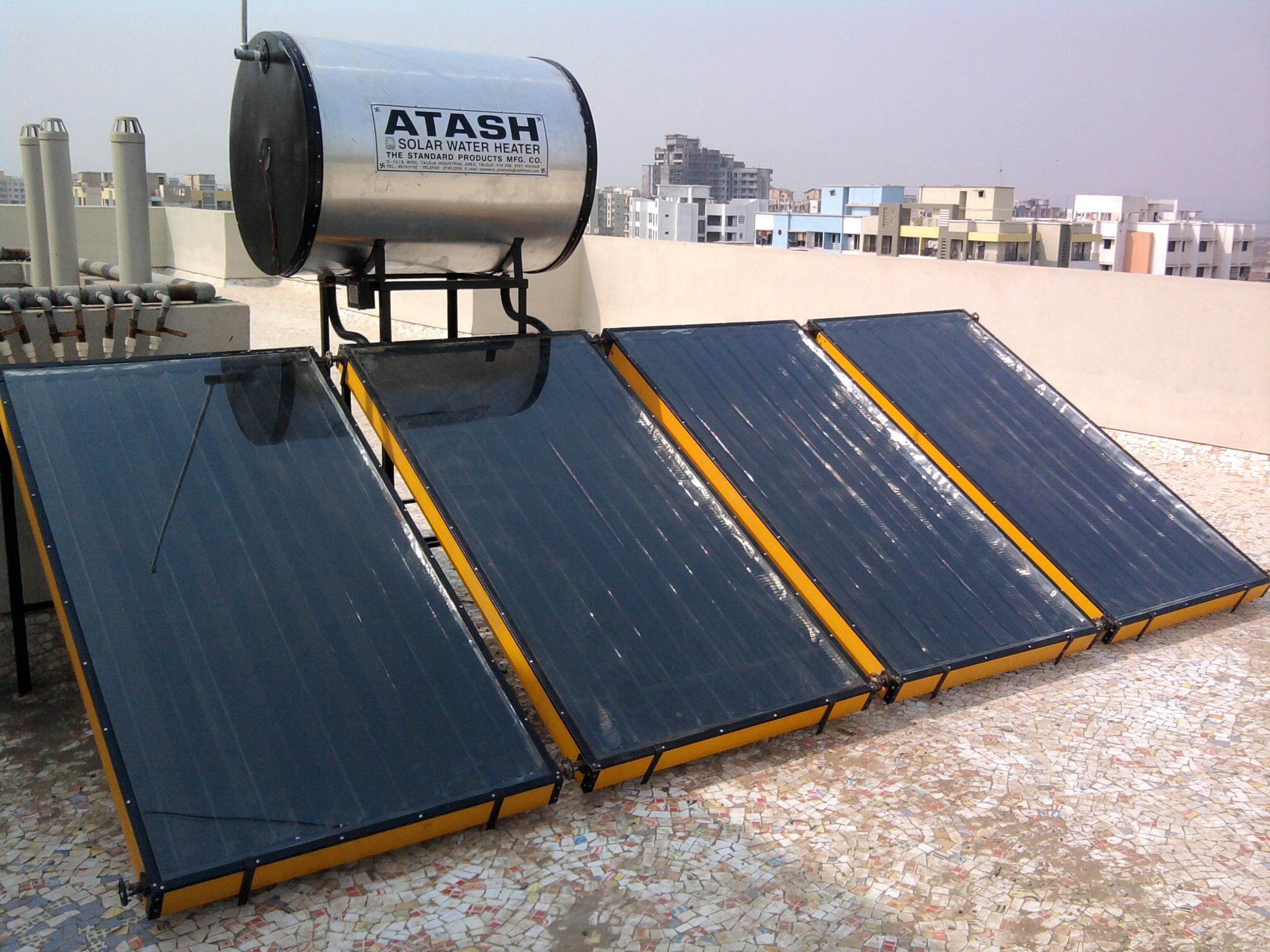Solar Water Heaters
Solar water heaters are also known as solar domestic hot water, and it is a pocket friendly method of generating hot water in the house. The system uses the sunshine, which is free; therefore it can be used in any climatic condition.
How it Works
This solar water systems comprise of receiver tanks accompanied by solar collectors. Solar water heating systems are of two types, the active that comprise of circulating controls and pumps. The second type being the passive type that lacks control and circulating pumps.
Active Solar Water Heating Systems
This system is made up of two main types:
Direct circulation systems
The pumps of direct circulation system circulate water into the house from the collectors. It works effectively in warm areas.
Indirect circulation systems
The pumps of this system work by circulating non-freezing, hot water through its chambers such as heat exchange, collectors, etc. When water passes through heat exchange is heated up and then circulated around the house. Unlike direct circulating systems, this system works perfectly in highly freezing areas.
Passive Solar Water Heating System
The passive solar water heating system are relatively economical in terms of price in comparison to active systems though they are not so much efficient. Although, this type of system is more reliable and long lasting compared to active system. Passive solar water systems are of two types:
Integral collector-storage passive systems
They work best in areas where temperature mostly remains above freezing point. Also, it is applicable in homes where evening and daytime hot-water needs are usually during needed.
Thermosyphon systems
Water flows in the system when cold water sinks as warm rises. The installation of collectors have to be below the reservoir tank to allow warm water to move up in the tank. These systems are well reliable, and it is for contractors to ensure that roof design can adhere to the heavy nature of the storage tanks. Compared to integral collector-storage passive system, thermosyphon systems are relatively more expensive.
Storage Tanks and Solar Collectors
A well-insulated storage tanks is a must for most solar water heaters. There are additional inlet and outlet connected to and from the collectors in the solar storage tanks. For two-tank systems, water is preheated by the solar water heater before being propelled to the conventional water heater. Solar storage is combined to the back-up heater in one tank in the case of one-tank systems.
Solar collections used for residential application are for three types:
Flat-plate collector
They are weatherproofed and insulated boxes that have a dark absorber plate under one or more plastic cover. The unglazed flat-plate collectors are made of black dark absorber plate made of either metal or polymer. They have no a covering.
Integral collector-storage system
Also called batch systems, have one or more tanks contained in a glazed, insulated box. Cold water is preheated once it enters through the solar collector. Then the heated water enter the conventional backup water heater which provides hot water. Their installation should only be in mild-freeze climates to prevent freezing of outdoor pipes during extremely cold weather.
Evacuated-tube solar collectors
They have parallel rows consisting of transparent glass tubes. Every tube has a metal absorber tube and a glass tube attached to a fin. The coating covering the fins absorbs solar energy but prevents radiative heat loss. Collectors are frequently used for U.S commercial application.
Most Solar water heating systems need a backup system that can used for cloudy days or during times of increased demand. As a matter of fact, conventional storage water heaters are ideal for providing backup and can be used as part of the solar system package. Additionally, a backup system can also be part of the solar collector, like rooftop tanks with thermosiphon systems.
Installing and Maintaining Solar Water Heaters System
Suitable installation of solar water heater relies on different factors. These factors are safety issues, solar resource, local building code requirements and climate; therefore, it is important to a qualified and certified solar thermal systems contractor to have your system installed.
Properly maintain your device after installation, this will ensure your system runs smoothly. The good thing about the passive system is that it does not need much maintenance. However, when it comes to active systems ensure you discuss the requirements maintenance with your system provider, and familiarize yourself with system’s owner’s manual. It is important to take note that plumbing, as well as other conventional water heating components, need the same maintenance requirements as conventional systems. Although, glazing might be cleaned especially in dry climates where rainwater does not provide rinse.
Frequent system maintenance on a simple system can be as infrequent as after 2-4 years, preferably by a solar contractor. Moreover, solar water heaters systems that contain electrical components mostly need a replacement part or two after some years.




